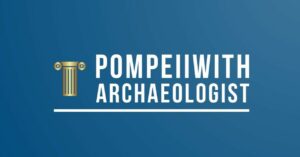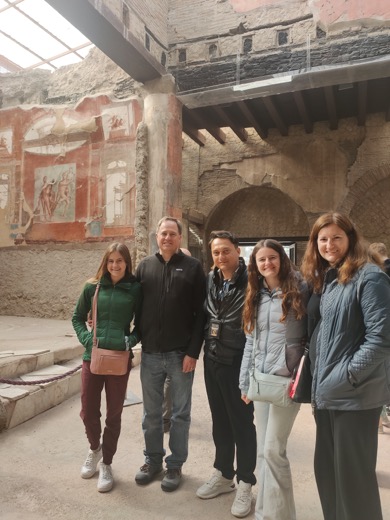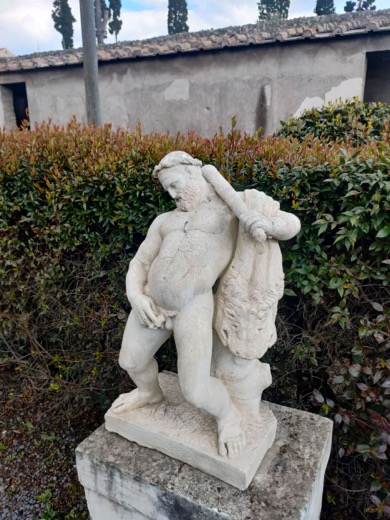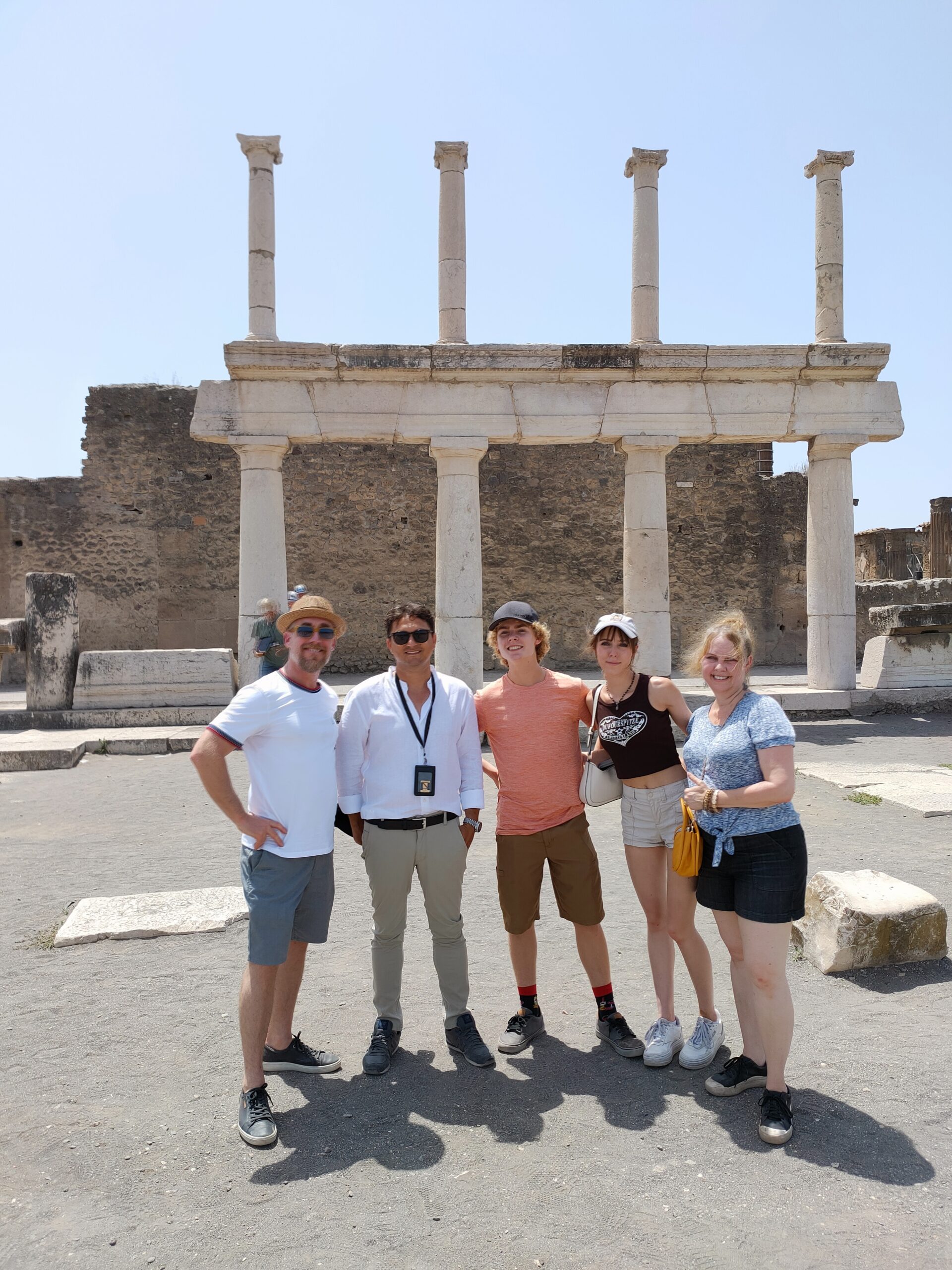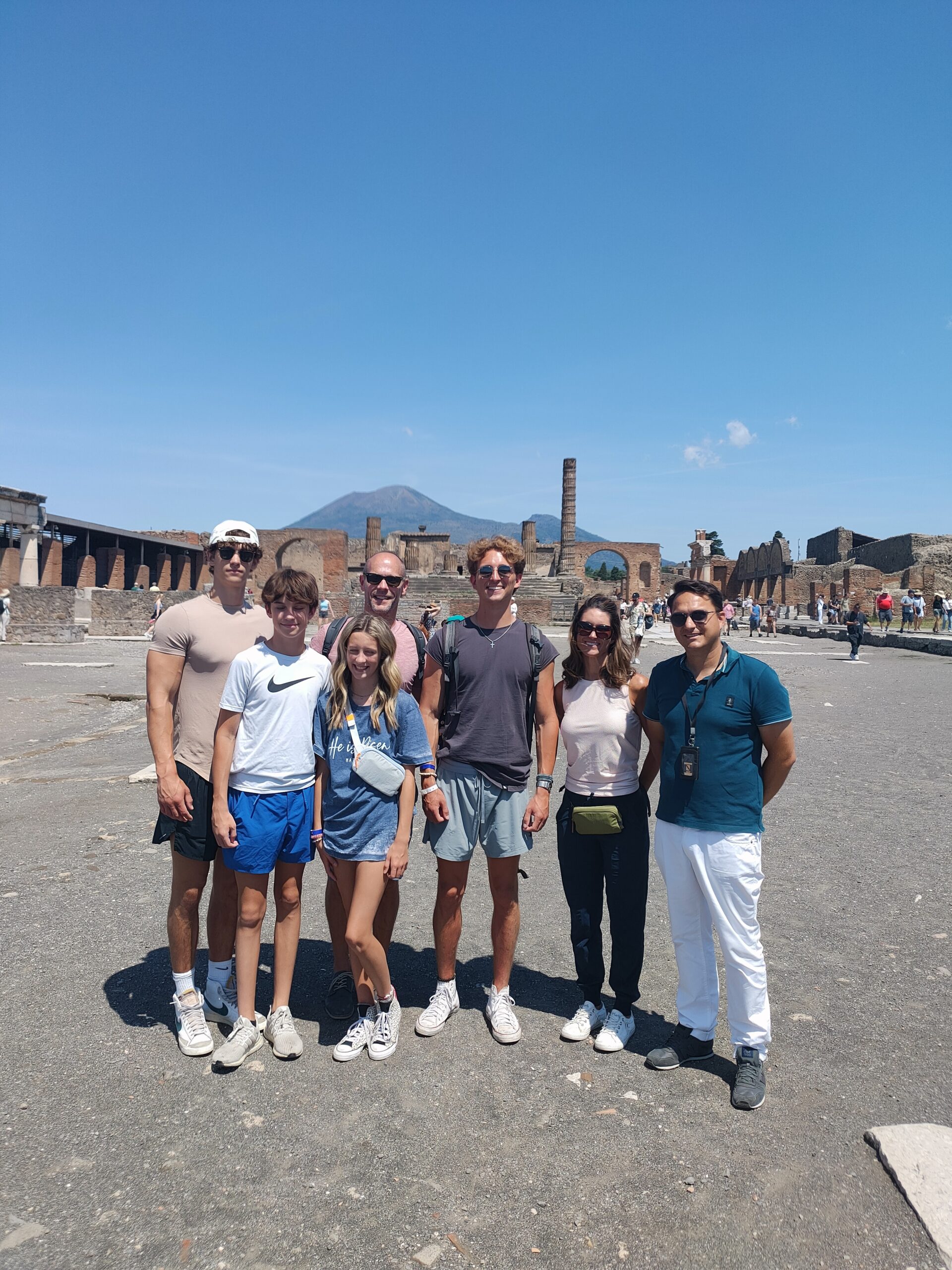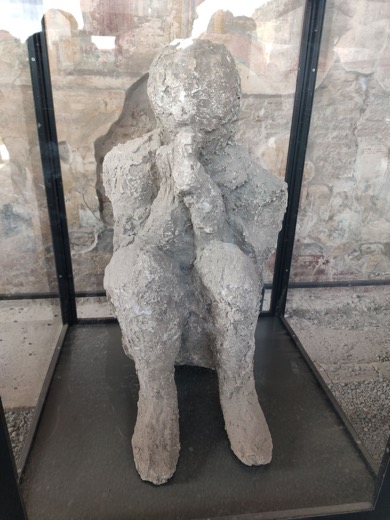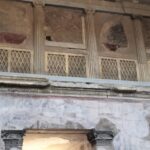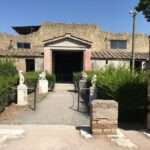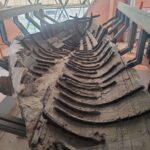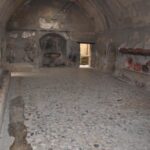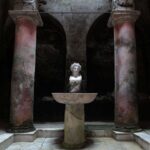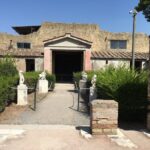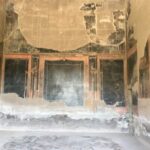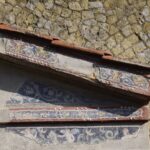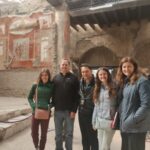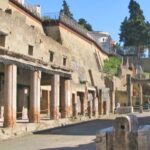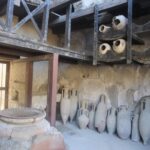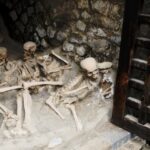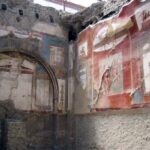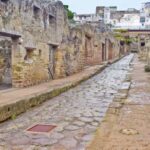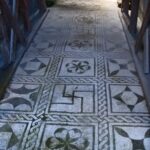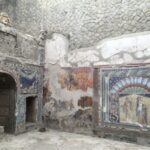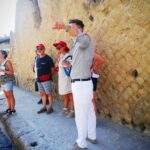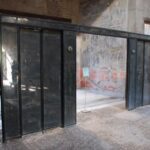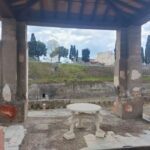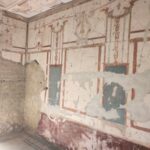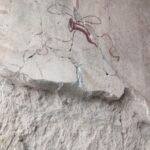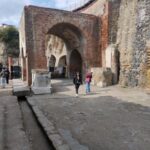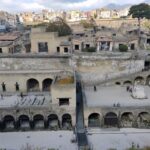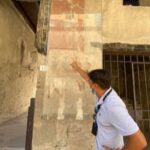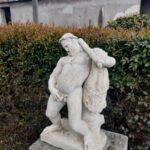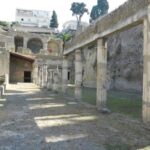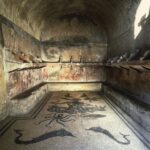pompeii and herculaneum: a comparison of the two buried roman cities
Pompeii and Herculaneum share similarities in their tragic fates and archaeological significance. However, they also exhibit distinct characteristics that set them apart.
The beginning of Pompeii‘s history can be traced back to the 7th century BC when it was founded as a small settlement by the Oscan people, an Italic tribe. The exact date of its founding is uncertain, but archaeological evidence suggests that it was established around the 7th or 6th century BC.
Originally, Pompeii was likely a rural community engaged in agriculture, benefiting from the fertile volcanic soil of the region. Over time, it grew into a more significant town, influenced by neighboring Greek colonies such as Cumae and Neapolis (modern-day Naples), which introduced Greek culture and trade to the area.
By the 6th century BC, Pompeii had become part of the Etruscan sphere of influence. The Etruscans, a civilization located in present-day Tuscany, controlled much of central Italy at the time. Pompeii’s contact with the Etruscans likely contributed to its further development and integration into regional trade networks.
In the 5th century BC, Pompeii came under the dominance of the Samnites, another Italic tribe. The Samnites were expanding their influence in southern Italy, and Pompeii became part of their territory during the Samnite Wars. Under Samnite rule, Pompeii continued to grow, establishing itself as a prosperous town with strong connections to other cities in the region.
By the 4rd century BC, Pompeii had become an important Roman ally, participating in the Roman campaigns against the Greek colonies of southern Italy. It was during this period that Pompeii was fully absorbed into the expanding Roman Republic, marking the beginning of its integration into the Roman world.
Throughout this early period, Pompeii’s economy thrived, supported by its fertile land, strategic location near the Bay of Naples, and its role as a commercial hub connecting southern Italy with other regions of the Mediterranean. The city’s prosperity laid the foundation for its later development into a thriving Roman city.
Overall, the beginning of Pompeii’s history reflects its gradual evolution from a small Oscan settlement to a bustling town with cultural and economic ties to both indigenous Italic peoples and the broader Mediterranean world.
The beginning of Herculaneum still remains uncertain. The name, however, of a Greek demigod, Heracles, could suggest a Greek foundation. Greek colonists coming from nearby Cumae, the oldest polis of Magna Graecia, had founded at the end of the 7th century BC. Partenope on the Pizzofalcone hill, in Naples; perhaps the same colonists also founded the settlement of Heracleion, the Greek name for Herculaneum, where an Oscan community already lived, as in Pompeii. The settlement was founded in the center of the Bay of Naples with the aim of creating a commercial seaport and control of the territory. The suggestive hypothesis, however, currently has no archaeological confirmation: there is no remains of the Greek occupation also because it is not possible to dig deep into the Roman city to find its most ancient traces. Certainly, it can be said that the urban layout dates back to the 4th century BC. and it could correspond to the foundation of the new city which was certainly inspired by the Hippodamian-type urban plan of nearby Neapolis.
Herculaneum was also conquered earlier in the 5th century BC. by the Samnites and then in the 4th century BC. by Romans. Its geographical position, between Vesuvius and the sea, made it unique and along the coasts of the gulf there were numerous seaside villas where the rich Roman patricians loved to spend their holidays. An exceptional testimony to the wealth and extreme luxury of the high class of Roman society is Villa dei Papiri. The villa was explored in the 18th century by the first explorers through a series of tunnels and yielded over one hundred bronze and marble statues, and around 1800 charred papyri: they are very fragile texts and with extreme difficulty some of them were unrolled and read, in the In most cases these are works of Epicurean philosophy. The villa is attributed, now with some certainty, to Julius Caesar’s father-in-law: Lucius Calpunius Piso Cesoninus. Part of the villa, the atrium, was excavated in the open in the 1990s, but this part of the excavations cannot still be visited today.
Here is an in-depth exploration of the differences between Pompeii and Herculaneum:
Size and Layout:
- Pompeii: Pompeii was a larger and more populous city compared to Herculaneum. It covered an area of approximately 163 acres and had a population of around 11,000 inhabitants at the time of the eruption. The layout of Pompeii featured wide streets, public squares, and numerous commercial and residential buildings.
- Herculaneum: In contrast, Herculaneum was a smaller and more affluent town situated closer to the sea. It covered an area of about 12 acres and had a population of around 4,000 residents. Herculaneum’s layout was characterized by narrower streets and a higher density of upscale villas.
Architecture and Building Materials:
- Pompeii: The architecture of Pompeii reflects its cosmopolitan character, with a mix of Greek, Roman, and indigenous Italic styles. Many buildings in Pompeii were constructed using local volcanic stone, known as tuff, which was readily available in the region.
- Herculaneum: Herculaneum’s architecture is characterized by its opulent villas and well-preserved frescoes and mosaics. The town’s buildings were constructed using high-quality materials such as marble and fine stucco, indicating the wealth and social status of its inhabitants.
Preservation and Excavation:
- Pompeii: Pompeii was first rediscovered in the 18th century, and extensive excavations have been conducted since then, revealing a wealth of artifacts and insights into daily life in ancient Rome. The volcanic ash and debris that buried Pompeii helped to preserve many structures and artifacts, offering a remarkably detailed snapshot of Roman civilization.
- Herculaneum: Herculaneum was also buried by the eruption of Mount Vesuvius but in a different manner. The town was engulfed by a pyroclastic flow, a fast-moving mixture of hot gas, ash, and volcanic rock, which resulted in its preservation under a thick layer of solidified volcanic material. The excavation of Herculaneum has been more challenging due to the density and hardness of the volcanic material, but it has yielded extraordinary finds, including well-preserved wooden structures and organic remains.
Art and Culture:
- Pompeii: Pompeii was a bustling commercial and cultural hub with a diverse population. Its numerous public buildings, theaters, and baths attest to its vibrant social and cultural life. Pompeii’s artistic legacy includes exquisite frescoes, sculptures, and mosaics depicting scenes from daily life, mythology, and religious rituals.
- Herculaneum: Herculaneum was known for its refined art and architecture, particularly its luxurious villas adorned with intricate frescoes and mosaics. The Villa of the Papyri, one of the most famous villas in Herculaneum, contained an extensive library of papyrus scrolls, providing valuable insights into ancient philosophy and literature.
Tourism and Visitor Experience:
- Pompeii: Pompeii attracts millions of visitors each year and is one of the most visited archaeological sites in the world. Visitors can explore the extensive ruins of Pompeii, including its streets, houses, public buildings, and amphitheaters, as well as view the famous plaster casts of victims preserved by the volcanic ash.
- Herculaneum: Herculaneum receives fewer visitors compared to Pompeii but offers a more intimate and immersive experience. The smaller size of Herculaneum allows visitors to appreciate its well-preserved buildings and artworks up close, providing a glimpse into the lives of its ancient inhabitants.
In conclusion, while Pompeii and Herculaneum share similarities as ancient Roman cities buried by the eruption of Mount Vesuvius, they also exhibit distinct differences in terms of size, architecture, preservation, art, and visitor experience. Together, they offer a fascinating window into the richness and diversity of life in the ancient Roman world.

